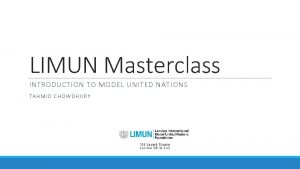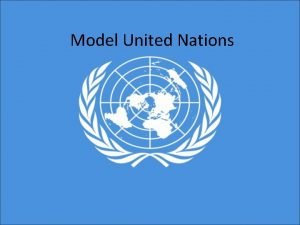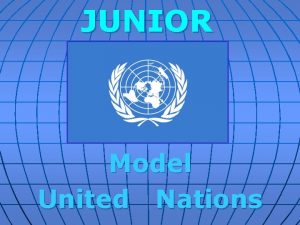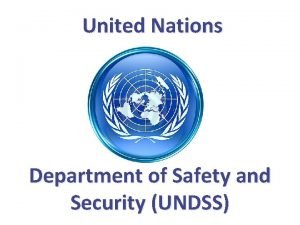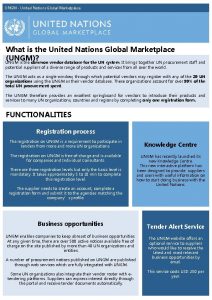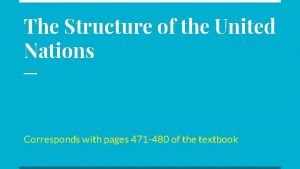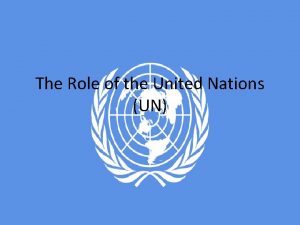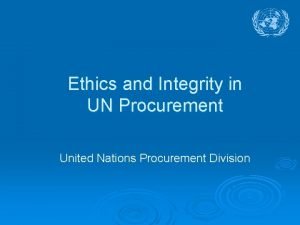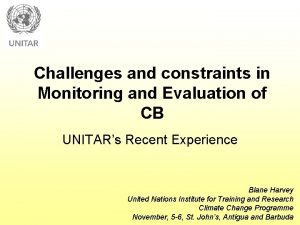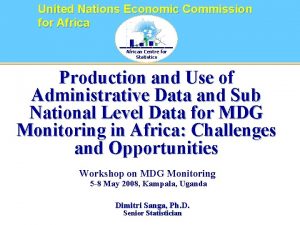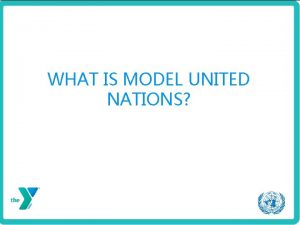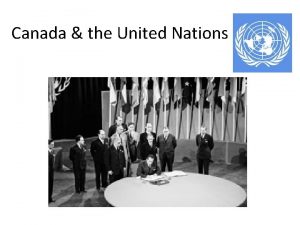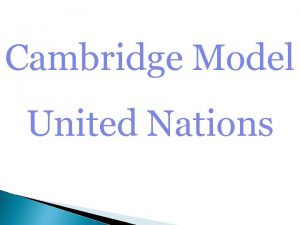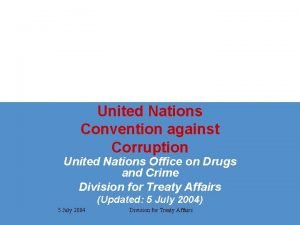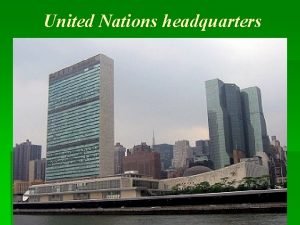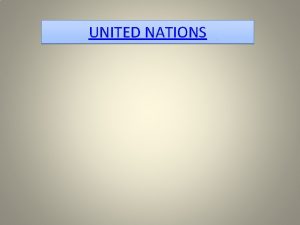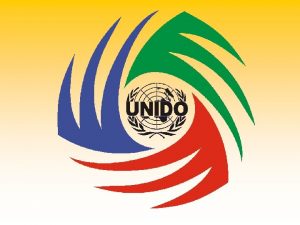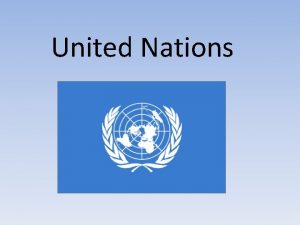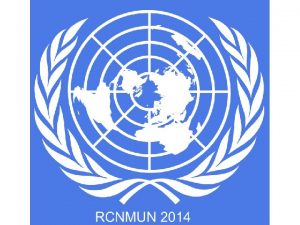Model United Nations Model United Nations also Model













- Slides: 13

Model United Nations

Model United Nations (also Model UN or MUN) is an academic simulation of the United Nations that aims to educate participants about civics, current events, effective communication, globalization and multilateral diplomacy. In standard Model UN, students take on roles as diplomats and participate in a simulated session of an intergovernmental organization (IGO).

During a conference, participants must employ a variety of communication and critical thinking skills in order to represent the policies of their country. These skills include public speaking, group communication, research, policy analysis, active listening, negotiating, conflict resolution, note taking, and technical writing. However, school delegation formats vary from region to region. Most Model UNs are simulations of a body in the United Nations system, such as: The General Assembly in both plenary form and within its functional committees Economic and Social Council and its specialized councils and agencies Security Council International Court of Justice United Nations Children's Fund United Nations Environment Programme United Nations Development Programme United Nations Educational, Scientific and Cultural Organization or UNESCO Human Rights Council Disarmament Committee United Nations High Commission for Refugees World Food Program World Health Organization World Trade Organization The Advisory Panel

A position paper is an essay that is written by participants of some models. It describes the detailed position of a certain country on a topic or issue that the writer will debate in his committee. Position papers are not always required, but certain conferences mandate that each delegate send his own before the opening. It is also known as the (Foreign) Policy Statement or (F)PS. [5]

While simulations are conducted in many languages, including the six official languages of the UN, generally, a simulation is conducted the most spoken language or languages in the area in which it is being held. For example, in Mexico, Colombia, Venezuela and the Southwestern United States, many conferences are run in both Spanish and English. In Canada, both French and English are used. Some conferences, like those in the Dominican Republic, offer up to three languages. In Brazil, in spite of Portuguese being the country's official language, the oldest conference, AMUN, is held in English. Brazil is also known for its conferences and delegates high academic level, being the unique country to have more than one student in GMUN chairing. In Germany, all national conferences are held in English. In the Arab world, especially Egypt, Lebanon and the Maghrib states, most MUN conferences are allowed to be conducted in Arabic, and English and French, since French and English are widely spoken and understood. In Russia, most of the conferences are held with an equal number of committees in Russian and English.

Model UN is supported by many organizations, private groups, non-governmental organizations, inter-governmental organizations and national governments. United Nations Associations around the world and its international organization the World Federation of United Nations Associations (WFUNA) have supported MUNs for decades. WFUNA organized the first collegiate MUN in China and works with MUNs all over the world.

Our lyceum also takes part in different MUNs. Our delegations that consist of M. Matviychuk, O. Bloshko, B. Hrushchuk, D. Franchuk, A. Prumenko and A. Samkov took part in two MUNs.

AND





 Introduction to model united nations
Introduction to model united nations Model united nations
Model united nations Junior model united nations
Junior model united nations United nations
United nations What is undss
What is undss Ungm
Ungm Six main organs of the united nations
Six main organs of the united nations Role of united nations
Role of united nations Ethics and integrity at the united nations
Ethics and integrity at the united nations Constraints in monitoring and evaluation
Constraints in monitoring and evaluation United nations zambia
United nations zambia United nations
United nations United nations
United nations The agency sponsored by the united nations that compiles
The agency sponsored by the united nations that compiles
